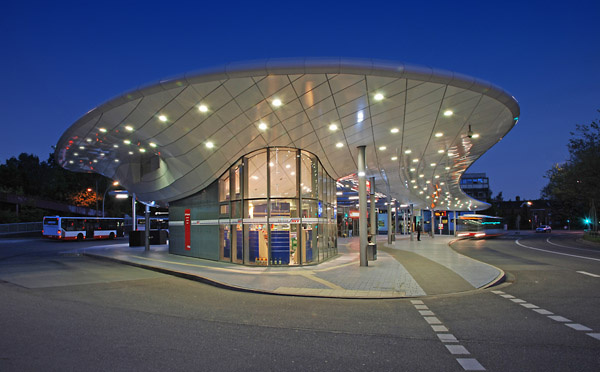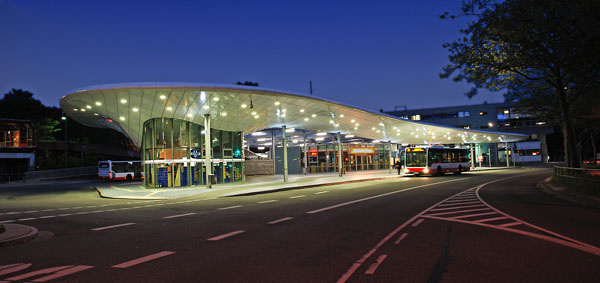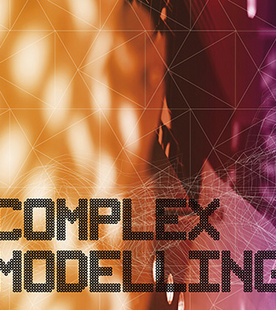ZOB Hamburg

A commercial research collaboration between CITA, Blunck Morgen Architects and WTM Engineers GmbH.
A public transport Hub in the north of Hamburg had to be adopted to new requirements. The new designed station consists of two elements: a solid wing which is oriented towards the flanking main street and a transparent roof element which defines a sheltered space for waiting and resting people. The expressive form of the wing gives the space a new identity and restructures the urban space. Upon sucess in the bidding process for design and construction (Dec 2007), the old structure was torn down and construction work started in 2008 and could be finished in end of 2009.

The wings shape is formed from urban forces of the surroundings. It hosts public functions and guides movements in the heterogenous environment, gives shelter to passengers and identity to the site. Its massive part defines the border to the crowded street and hosts the departure area for buses. The south part serves as resting area the transparent roof protects while allowing exposure to sun.

The complex infrastructural necessities of public transport were solved by extending an existing bridge. By this mean an adjoining urban square, the train station and a new multi-storey car park are linked in a continious flow of movements. The design proces engaged 3d modelling and visualisation tools that eased communication and provided good enough data for the later planning phases.

The complex curved shape of the space defining 70m freeform roof derives from a design process, using rapid-prototyping and digital modelling tools. The wings surface is made of more than 700 individual formed diamond shaped aluminium cassettes the adjacent transparent roof of EPTFE film.

In order to control the construction, intensive research work was undertaken in the fields of freeform modelling and how to transform double curved surfaces to other types of geometry. A wide range of tools for surface tiling and construction of freeform structures has been developed up to production level. The coordination of the planning process was based on a detailed 3d-model, which served for communication, bidding as well as all parts of the fabrication process.






